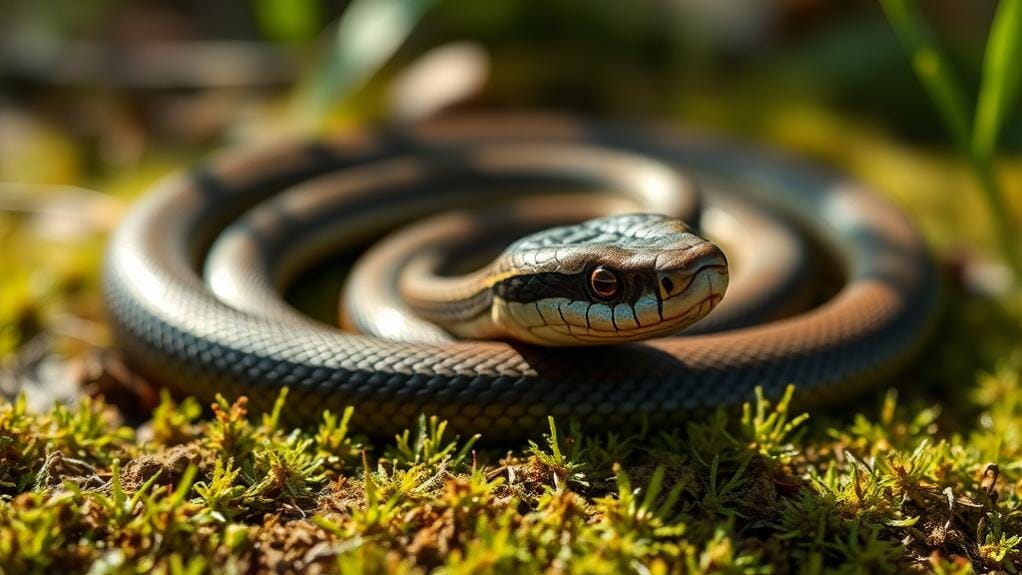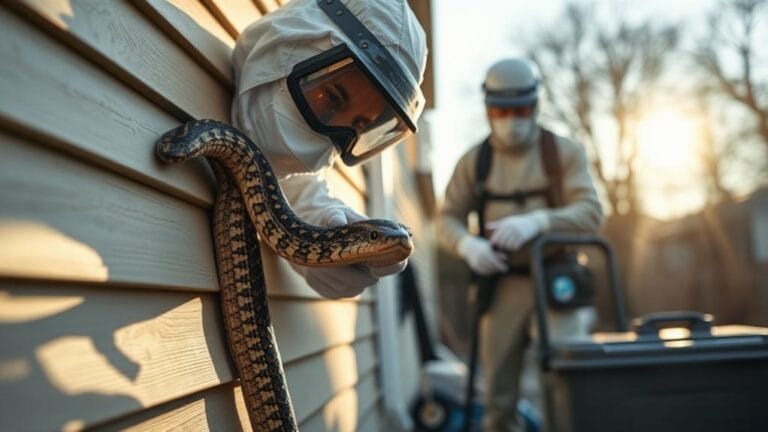Looking to ID that snake in your garden? I'll make it super simple. Common garden snakes (aka garter snakes) typically measure 18-26 inches with three distinct stripes running down their bodies – usually yellow, white, or red. You'll spot them with glossy scales in greens, browns, or grays. Their heads are wider than their necks (like tiny shoulder pads), and some sport flashy red spots along their sides. Females are generally chunkier and longer than males. Watch for them during the day, when they're actively hunting. Trust me – there's way more to these slithery neighbors than meets the eye.
Physical Traits and Markings
Table of Contents
Looking out for a Common Garter Snake reveals several key physical traits that make these garden-dwellers easy to spot.
I'll help you identify these slithery neighbors – they're actually pretty distinctive once you know what to look for. When using natural snake deterrents, it's essential to properly identify the species you're dealing with first.
You're searching for a slim character, usually between 18-26 inches long. Trust me, that's tiny compared to those monster pythons you see on TV!
Look for these telltale signs:
- Three long stripes running down their body (yellow, white, or red – they're not picky)
- A head that's wider than their neck (like they're wearing tiny shoulder pads)
- Smooth, glossy scales that'll catch the sunlight
- Red spots along their sides (nature's polka dots, if you will)
*Pro tip: If it's thicker around the middle, you're probably looking at a female. Males are the slim-fit version of the species.*
Color Variations Among Garden Snakes
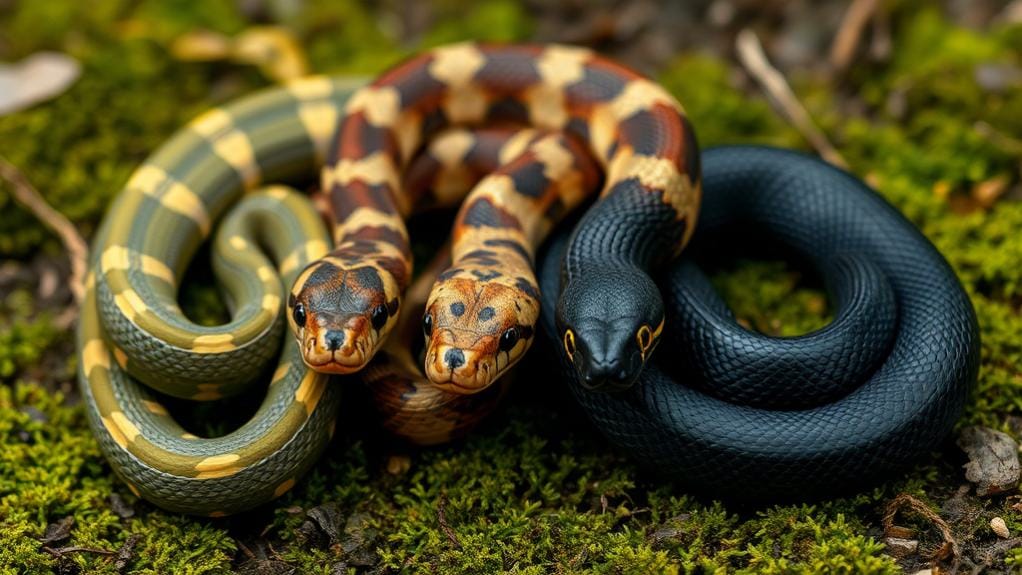
Those distinctive stripes we just discussed come in an amazing array of colors that make garden snakes truly fascinating to observe.
When you're looking at Common Garter Snakes, you'll notice they're basically nature's fashion show – sporting everything from greens to browns and grays.
Snake glue traps are commonly used to catch these colorful creatures when they become a nuisance in gardens.
You'll love this: Eastern Garter Snakes rock a dark body with yellow stripes that really pop during breeding season. It's like they're dressing up for date night!
Pro Tip: Don't assume all stripes are created equal – some snakes show off red or orange spots along their sides.
The San Francisco Garter Snake's got its own thing going with bold black and red stripes.
And here's the kicker: these color variations aren't just for show. Their skin pattern can actually change based on environment and age. Pretty clever, right?
Scale Patterns and Structure
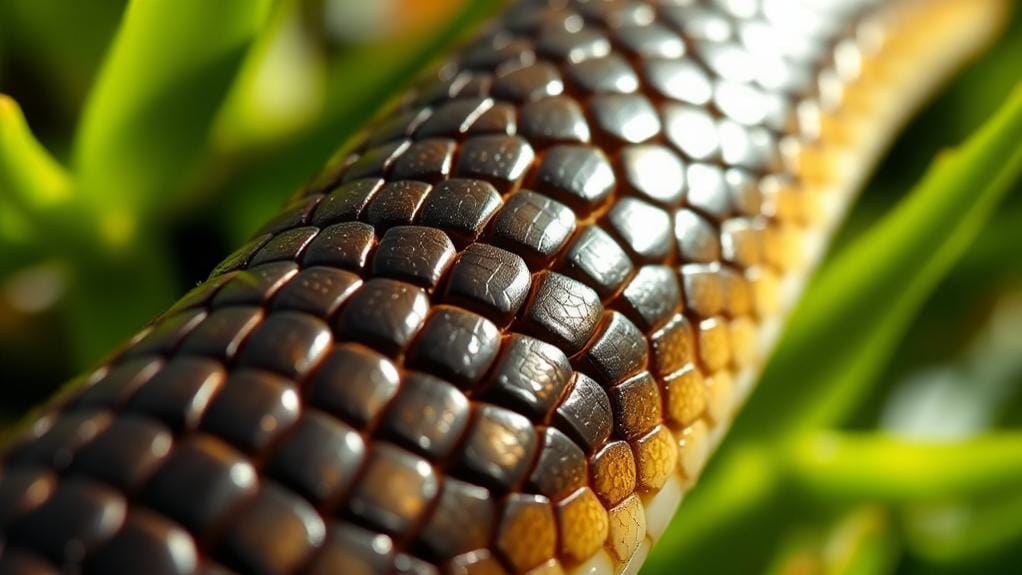
Identifying garden snakes becomes much easier once you understand their distinctive scale patterns. I'll help you spot these slithery friends by their scales – trust me, it's not as tricky as it sounds!
| Feature | Characteristics |
|---|---|
| Basic Texture | Smooth and shiny |
| Eastern Garter | 3 stripes, keeled scales |
| Scale Growth | Fixed number, increases in size |
| Upper Lip Scales | 7-8 depending on species |
Let's focus on the Common Garter Snake – it's probably hanging out in your garden right now! The scale pattern is like a snake's fingerprint. I've noticed that different species have their own unique arrangements, especially around the upper lip area. Pro tip: If you're counting scales on the snake's lip, maybe reconsider your weekend hobbies!
Always remember: these patterns aren't just for looks. They help snakes swim, grow, and shed their skin in one piece – pretty neat, right?
Behavioral Recognition Tips
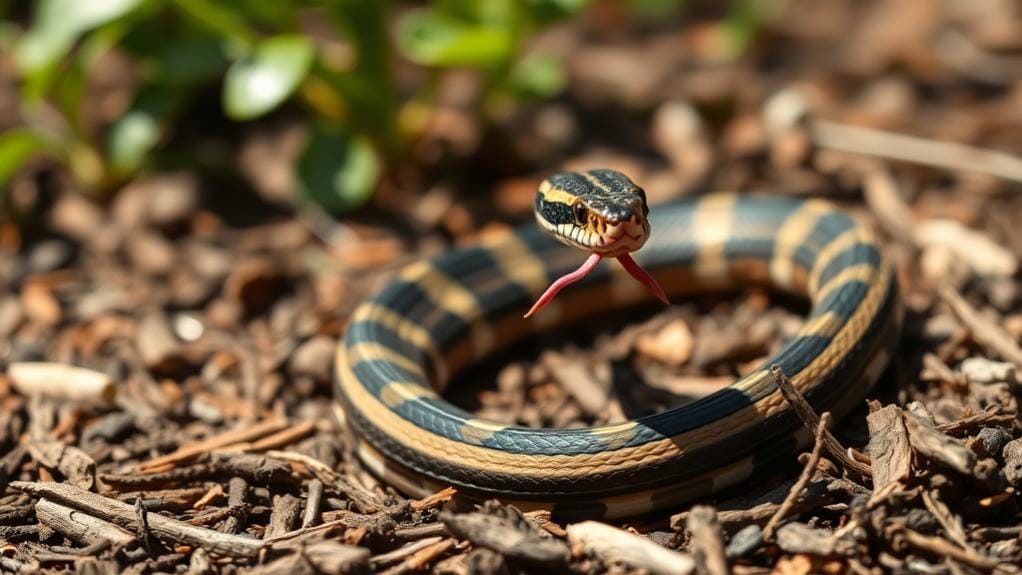
While scale patterns help identify garden snakes, their unique behaviors can reveal even more about their identity.
I'll show you how the Common Garter Snake's daily routines and habits make them stand out from other species you might encounter in your garden.
Using snake predators like cats or dogs in your yard can help control their population while maintaining the local ecosystem.
- You'll spot these active hunters during daylight hours – they're not shy about basking in the sun like tiny solar panels.
- During mating season, watch for "mating balls" – yes, that's really what we call multiple males competing for one female.
- If threatened, they'll pull the old "I'm just a stick" trick by flattening their body and freezing in place.
- Look for quick, agile movements when they're hunting – these speedy serpents aren't exactly couch potatoes.
*Pro tip: If you smell something musky, you're probably picking up their pheromone signals. Don't worry – you're not their type.*
Size and Gender Differences
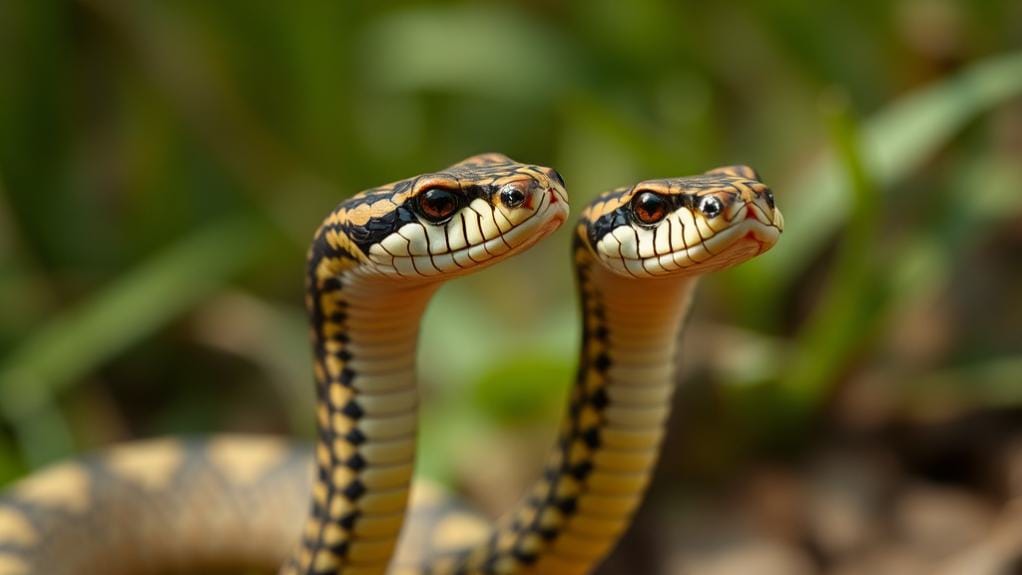
Beyond their distinctive behaviors, size and shape offer clear clues to a garden snake's gender. During winter months, these snakes undergo seasonal brumation periods where activity levels decrease considerably as they seek shelter.
I'll make this super simple for you – when it comes to Common Garter Snakes, bigger usually means female. If you spot one over two feet long with a thick body, you're likely looking at a lady snake.
Pro Tip: Don't just focus on length – check out that head shape!
Here's your quick gender ID cheat sheet:
- Females: Chunky bodies, wide heads, and distinct belly patterns (plus they might look extra round when carrying babies)
- Males: Slimmer builds under 2 feet, narrow heads that taper at the neck
Want a dead giveaway? Weight is your friend here. Females pack on more pounds – it's not body shaming, it's just snake facts!
Trust me, once you know these differences, you'll be a snake-spotting pro.
Regional Species Distribution
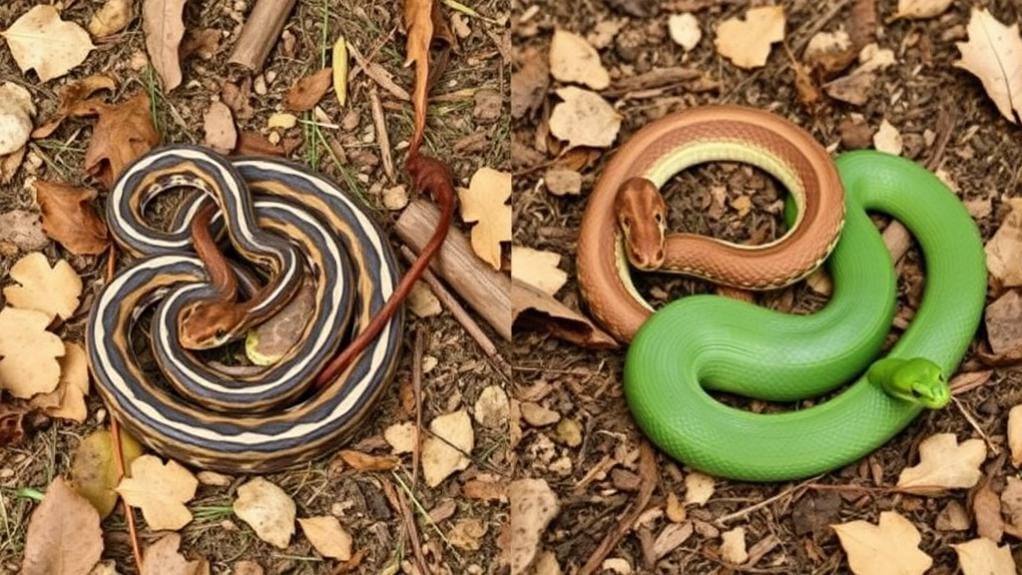
Throughout North America, Common Garter Snakes have adapted to diverse habitats, stretching from southern Canada's wetlands to Mexico's warmer regions.
These resourceful reptiles often seek warm, dark spaces near homes and gardens, especially around wood piles and water sources.
I'll help you identify the major regional species distribution so you won't mistake these slithery neighbors for something more sinister.
- Eastern Garter Snake dominates the East Coast with its classic dark body and yellow stripes (yeah, it's basically the snake next door)
- Texas Garter rocks the central region with its fancy greenish-black coat and red-orange racing stripes
- San Francisco Garter (the endangered celebrity) keeps it exclusive to the Bay Area's wet spots
- Western Terrestrial Garter claims the West Coast moisture zones with its fashion-forward variable striping
*Pro tip: Regional variations can look deceivingly different, but they're all part of the same snake family – just with different ZIP codes!*
Frequently Asked Questions
How Do I Identify a Garden Snake?
I look for three long stripes (yellow, white, or red) against green or brown coloring. I'll check the belly scales, upper labial count, and body size to confirm if it's a garter snake.
What Is the Difference Between a Garden Snake and a Garter Snake?
I'll explain: "Garden snake" is a general term for any harmless snake in your garden, while "garter snake" specifically means the Thamnophis sirtalis species, known for its three distinct stripes along its body.
What Is the Most Common Garden Snake?
I'll tell you that the Common Garter Snake (Thamnophis sirtalis) is the most common garden snake you'll find. They're easily spotted by their three stripes and can be green, brown, or gray.
What Snakes Are Mistaken for Garter Snakes?
I'll tell you which snakes get mixed up with garters. I've seen folks confuse Eastern Ribbon, Common Water, Northern Brown, Eastern Hognose, and California Kingsnakes for garters due to similar looks.
Last Word
I've learned that garden snakes aren't the villains of your backyard – they're actually the heroes you didn't know you needed. While you're busy freaking out about that garter snake near your tomatoes, it's busy eating the slugs that are actually destroying your garden. Sure, they might startle you, but let's face it: you're way scarier to them than they'll ever be to you. Know them, respect them, let them do their job.

